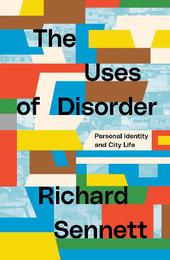
|
The Uses of Disorder: Personal Identity and City Life
Paperback / softback
Main Details
| Title |
The Uses of Disorder: Personal Identity and City Life
|
| Authors and Contributors |
By (author) Richard Sennett
|
| Physical Properties |
| Format:Paperback / softback | | Pages:224 | | Dimensions(mm): Height 198,Width 129 |
|
| Category/Genre | Theory of architecture
Social and political philosophy |
|---|
| ISBN/Barcode |
9781839764080
|
| Classifications | Dewey:307.76 |
|---|
| Audience | |
|---|
|
Publishing Details |
| Publisher |
Verso Books
|
| Imprint |
Verso Books
|
| Publication Date |
16 November 2021 |
| Publication Country |
United Kingdom
|
Description
When first published in 1970, The Uses of Disorder, was a call to arms against the deadening hand of modernist urban planning upon the thriving chaotic city. Written in the aftermath of the 1968 student uprising in the US and Europe, it demands a reimagination of the city and how class, city life and identity combine. Too often, this leads to divisions, such as the middle class flight to the suburbs, leaving the inner cities in desperate straits. In response, Sennett offers an alternative image of a 'dense, disorderly, overwhelming cities' that allow for change and the development of community. Fifty years later this book is as essential as it was when it first came out, and remains an inspiration to architects, planners and urban thinkers everywhere.
Author Biography
Richard Sennett is one of the world's most highly distintguished urban thinkers and planners. His previous books include The Fall of Public Man, Flesh and Stone and Respect, as well as the recent Homo Faber trilogy, The Craftsman, Together, Building and Dwellings. For decades he has advised urban programmes for the United Nations. He has been awarded the Hegel and Spinoza prizes, as well as an honorary doctorate by Cambridge University.
ReviewsHis argument remains powerful and relevant, an inspiration to a new generation of urbanists. -- P D Smith * Guardian * The best available contemporary defence of anarchism . . . The issues [he] raises are fundamental and profound. His book is utopian in the best sense?it tries to define a radically different future and to show that it could be constructed from the materials at hand * New York Times *
|